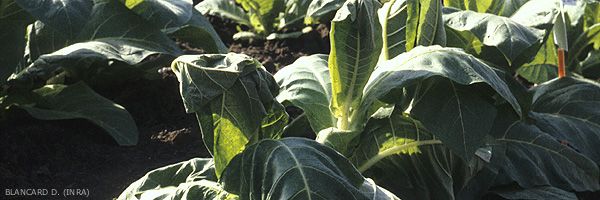
Root asphyxia
After a heavy rain or in places where an irrigation pipe breaks, water may cover the crop and remain standing between the rows for some time. Later, the plants having undergone the water stress often suddenly wilt (figure 1). The lamina of these plants turns more or less yellow and then dries up (figures 2 a nd 3). If water retention has lasted longer and if the soil is heavy, plants may wilt and completely dry up (see also the effects induced by a hardpan).
A tobacco plant does not tolerate well having its root system completely immersed in water for a long time. It lacks of oxygen and is therefore in a state of asphyxia. Under this condition the root system is partly destroyed, which causes wilting of the plant. This telluric phenomenon may be amplified by the proliferation of anaerobic micro-organisms that contribute to the deterioration of the roots.
In general, considerable damage is observed in poorly drained fields, with heavy soils and during a period of hot weather which favours anaerobic micro-organisms; this accelerates plant transpiration and therefore wilting. In fields where asphyxia takes place, it will be necessary to drain the soil and plant tobacco on relatively high ridges.





